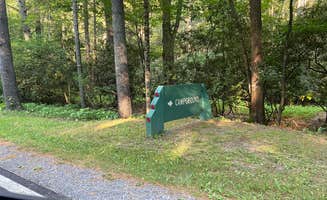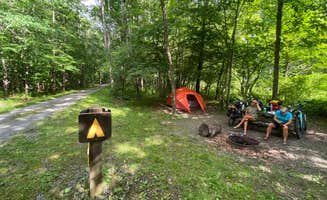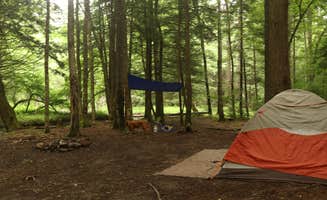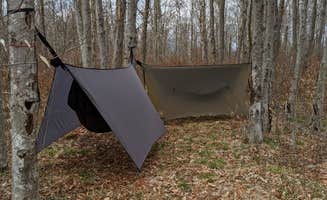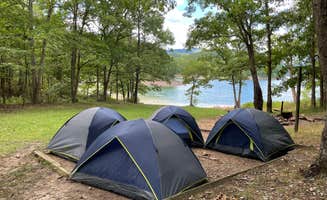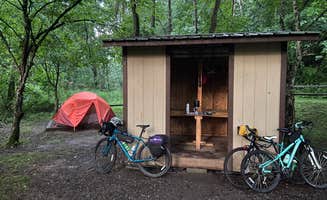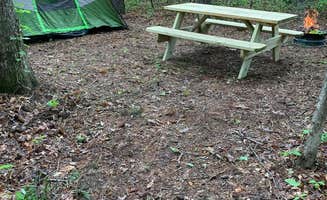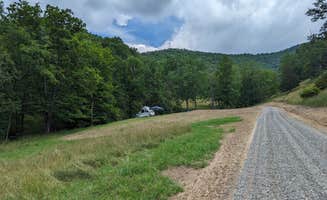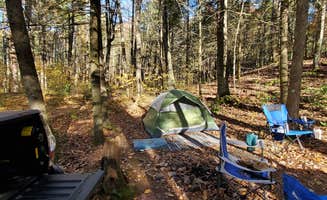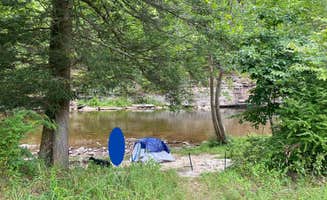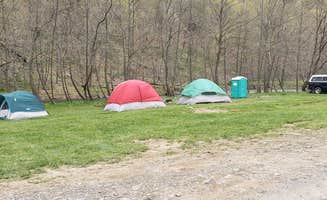Tent camping around Snowshoe, West Virginia offers primitive accommodations within the Monongahela National Forest's diverse ecosystems, ranging from 3,000 to 4,800 feet in elevation. The region receives approximately 180 inches of snow annually, creating distinctly different camping experiences between the warm summer months and colder shoulder seasons. Road conditions deteriorate significantly after rainfall, particularly on forest service roads leading to the more remote camping areas.
What to do
Hiking exploration: For tent campers staying at Poor Farm Dispersed Recreation Area, the surrounding trails provide excellent day hiking options. A visitor noted, "I'm all about trails so this place was greaaat!" This free camping area includes multiple spots near the river that serve as ideal base camps for trail exploration.
River activities: During summer months, the Greenbrier River provides cooling relief from hiking. At Greenbrier River Trail MP 69.6, campers can access the river directly from their sites. As one camper described, "The MP 69.6 Camping Area is along the Greenbrier River, so camping along it affords great wildlife viewing at dawn and dusk when the animals head to the water to drink." Swimming holes are accessible at various points along the trail.
Wildlife observation: The forests near Snowshoe support diverse wildlife populations. At Little River Dispersed Campsites, campers regularly encounter forest creatures. One camper shared, "Not even 2 minutes from our dispersed camp site we were charged by an extremely aggressive black bear." While this encounter was unusually close, it demonstrates the importance of wildlife awareness while camping in this region.
What campers like
Solitude and quiet: Many tent sites near Snowshoe remain uncrowded even during peak season. At McClintic Point Primitive Campground, campers appreciate the lack of crowds. One visitor wrote, "No neighbors. Maybe we just got lucky. I encourage." The small number of sites helps maintain a peaceful atmosphere.
Stream-adjacent camping: The best tent camping near Snowshoe, West Virginia often features streamside locations. Regarding Little River Dispersed Campsites, a camper described their experience: "The site was breathtaking, with a small stream pool running along one edge, and the rushing river on another. Soft dirt padded the entire area, and great trees filled the space with their natural architecture and canopy."
Raised tent pads: Many sites feature elevated camping areas to manage moisture. At Greenbrier River Trail Mile Post 49.3 Primitive Campsite, a camper noted, "Raised fine gravel tent pad" among the pros of the site. These platforms help tent campers stay dry during West Virginia's frequent rain showers.
What you should know
Road access challenges: Many remote campsites require navigating difficult roads. A camper at Little River Dispersed Campsites reported, "We drove in from the south, through Durbin, which is almost 7 miles on a pothole ridden dirt road. Dangerous for RVs, great for those looking for an escape." Small vehicles can navigate these roads carefully, but larger vehicles may be unable to access certain areas.
Bear precautions: Bears are active throughout the camping areas near Snowshoe. At Little River, a camper advised, "We decided to keep ALL FOOD in the car's trunk those nights and not hanging in a tree just to be safe." Improper food storage attracts wildlife to campgrounds and increases risks for all campers.
Water sources: Potable water availability varies significantly between sites. At Seven Mile Campground, campers can access "cold well water - Hand pump" for drinking water. However, many primitive sites require visitors to filter water from streams or bring their own supply.
Tips for camping with families
Gradual trail access: For families with young children, Greenbrier River Trail provides an easy gradient for biking and hiking. A visitor noted, "The Greenbrier River Trail is a delightful bikepacking excursion. Very doable for all ages." The 1% grade makes it accessible for children of various ages and abilities.
Adirondack shelter options: Several sites along the Greenbrier Trail offer shelters as alternatives to tent camping. One camper at Greenbrier River Trail Milepost 63.8 reported, "Newer Adirondack Style Shelter" among the site's amenities, providing families with additional protection during unexpected weather changes.
Wildlife education opportunities: The abundant wildlife creates natural learning experiences. A camper at Greenbrier River Trail MP 69.6 observed, "The amount of wildlife we saw throughout the day was incredible while biking the trail. Mostly deer, rabbit, chipmunks and Eastern Box Turtles sharing the trail...but we did see a few turkey, fox and bobcat."
Tips from RVers
Small RV access only: Many tent camping areas can accommodate very small RVs, but access is limited. At Seven Mile Campground, a visitor noted, "I imagine a small teardrop camper or popup could be patiently maneuvered onto this site (that's a tent camper speaking...larger campers may fit just fine, but you better feel comfortable backing long distances)." Standard RVs will find most primitive sites inaccessible.
Vault toilet facilities: Toilet facilities at tent campgrounds vary in quality and maintenance. At Day Run Campground, a camper advised, "Take your own toilet paper if campground isn't busy because it doesn't get maintained daily and we ran out." Even established campgrounds may have limited services during off-peak periods.
Weather preparation: The mountain weather around Snowshoe changes rapidly. A camper at Greenbrier River Trail Milepost 63.8 shared, "In June, you can anticipate random, short afternoon or evening cloudbursts...but they can be gully-washers. Nights were cool and most mornings I wore a long-sleeve Merino shirt." Temperature variations between day and night can exceed 30 degrees.


